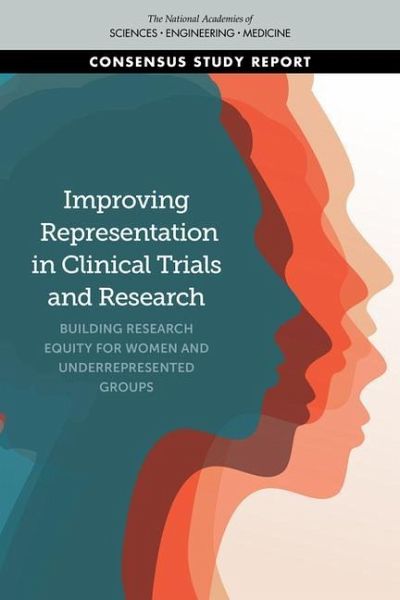
Improving Representation in Clinical Trials and Research
Building Research Equity for Women and Underrepresented Groups
Herausgeber: Helman, Alex; Bibbins-Domingo, Kirsten
Versandkostenfrei!
Versandfertig in über 4 Wochen
34,99 €
inkl. MwSt.

PAYBACK Punkte
17 °P sammeln!
The United States has long made substantial investments in clinical research with the goal of improving the health and well-being of our nation. There is no doubt that these investments have contributed significantly to treating and preventing disease and extending human life. Nevertheless, clinical research faces a critical shortcoming. Currently, large swaths of the U.S. population, and those that often face the greatest health challenges, are less able to benefit from these discoveries because they are not adequately represented in clinical research studies. While progress has been made wit...
The United States has long made substantial investments in clinical research with the goal of improving the health and well-being of our nation. There is no doubt that these investments have contributed significantly to treating and preventing disease and extending human life. Nevertheless, clinical research faces a critical shortcoming. Currently, large swaths of the U.S. population, and those that often face the greatest health challenges, are less able to benefit from these discoveries because they are not adequately represented in clinical research studies. While progress has been made with representation of white women in clinical trials and clinical research, there has been little progress in the last three decades to increase participation of racial and ethnic minority population groups. This underrepresentation is compounding health disparities, with serious consequences for underrepresented groups and for the nation. At the request of Congress, Improving Representation in Clinical Trials and Research: Building Research Equity for Women and Underrepresented Groups identifies policies, procedures, programs, or projects aimed at increasing the inclusion of these groups in clinical research and the specific strategies used by those conducting clinical trials and clinical and translational research to improve diversity and inclusion. This report models the potential economic benefits of full inclusion of men, women, and racial and ethnic groups in clinical research and highlights new programs and interventions in medical centers and other clinical settings designed to increase participation.












